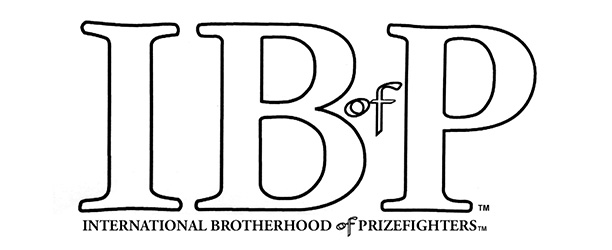Articles of 2003
What If: Monzon vs. Hagler

What if in this corner was Carlos Monzon (11-7-70 thru 7-30-77) from Santa Fe Argentina, the middleweight champion of the '70s, and in this corner was Marvin Hagler (9-27-80 thru 4-6-87) from Newark New Jersey, the middleweight champion of the '80s? How great would this have been, Monzon vs. Hagler at their best? This is definitely one of the fights I would want to see if I could go into a time machine and punch up the fight of my choice. Both Monzon and Hagler must be included in anyone's all-time top five or six middleweight ranking, and that may be understating it.
Monzon's career got off to less than a hall of fame start. He lost three decisions during his first two years as a pro in a span of 20 fights. He would go on to avenge all three defeats before fighting for the middleweight title. In one case, he avenged one of his defeats twice and another one he avenged three times. Despite winning the Argentine and South American middleweight titles, Monzon was almost unheard of by the time he traveled to Rome to face reigning world champ Nino Benvenuti.
Hagler's career started a little better than Monzon's. Hagler would suffer two of his three career defeats in his first 29 fights. He would go onto avenge his first loss once and his second loss twice, while his third defeat came in his final fight. By the time Hagler was ready to challenge middleweight champ Vito Antuofermo, he was a top contender feared and avoided by some of the other top contenders.
Like many great champions, Monzon and Hagler share some striking similarities. They both fought in 15 world middleweight title fights, and had more than a ten-year undefeated streak during their careers. Monzon was undefeated from Oct '64 through July '77, including 14 title defenses, while Hagler was unbeaten from May '76 through April '87, including 12 title defenses. Another thing these two middleweight legends have in common is that they were the best in their division in the decade they fought: Monzon in the '70s and Hagler in the '80s. Regarding middleweight title records, Monzon ranks second in successful title defenses and Hagler ranks third (current middleweight champ Bernard Hopkins is number one). One thing to consider when evaluating Monzon's title defenses is that during the last five years of his career (1972-77) and eight title defenses, he fought with a bullet lodged in his left shoulder courtesy of his ex-wife who shot him in the forearm and shoulder during an argument.
During their careers, Monzon and Hagler fought in a very deep middleweight era. Monzon defeated five world champions (Nino Benvenuti-2xs, Emile Griffith-2xs, Denny Moyer, Jose Napoles, and Rodrigo Valdez-2xs) and Hagler defeated four (Vito Antuofermo, Alan Minter, Roberto Duran, and Thomas Hearns). When reviewing the fighters they both faced, it's difficult to determine who faced the better opposition. After a thorough review, I would break it down in two categories. From their pro-debut up to their first title fight, I think Hagler faced the better grade of fighters, but as champion, I think Monzon faced the better overall opposition from top to bottom. Fighting Benvenuti twice, Griffith twice, Briscoe, Napoles, and Valdez twice as champion and going 8-0 in those fights tilts the scale in Monzon's favor, although Hagler faced three all-time greats in Duran, Hearns, and Leonard (going 2-1 in those fights).
Middleweight Title Fights
MONZON – HAGLER
N. Benvenuti Ko-12 – V. Antuofermo D-15
N. Benvenuti Ko-3 – A. Minter Ko -3
E. Griffith Ko-14 – F. Obelmejias Ko- 8
D. Moyer Ko- 5 – V. Antuofermo Ko- 5
J.C. Bouttier Ko-13 – M. Hamsho Ko-11
T. Boggs Ko- 5 – C. Lee Ko- 1
B. Briscoe W-15 – F. Obelmejias Ko- 5
E. Griffith W-15 – T. Sibson Ko- 6
J.C Bouttier W-15 – W. Sypcion Ko- 4
J. Napoles Ko- 7 – R. Duran W-15
T. Mundine Ko- 7 – J. Roldan Ko-10
T. Licata Ko-10 – M. Hamsho Ko- 3
G. Tonna Ko- 5 – T. Hearns Ko- 3
R. Valdez W-15 – J. Mugabi Ko-11
R. Valdez W-15 – S.R. Leonard L-12
15-0 (10) – 13-1-1 (12)
One area where these two all-time greats part ways is their personality outside the ring. Although Monzon's boxing style was not flashy, his life outside of boxing was flamboyant, garish and, some have even said, pompous. Monzon's trademarks were fast-cars, fast-women (although he was married at the time), trendy clothes and plenty of late nights out on the town drinking and smoking. Those close to him marveled at how long he was champ, knowing the abuse he subjected his body to outside of boxing. When it came to training, he only did roadwork a month prior to the fight, and it's been said many times that Monzon never went all out in sparring. During the title reign of King Carlos, his name appeared in the South American gossip columns as often as it did in the sports pages.
As stated earlier, Monzon and Hagler were polar opposites outside the ring. Hagler lived a Spartan life outside of boxing. He was not known for keeping late nights out on the town, and was quoted often saying he liked going to bed early. He was married and stayed married until getting divorced a couple years after retiring. Hagler never let himself get out of shape, and was known to do roadwork three times a week when he wasn't scheduled to fight. When it came to training camp, he was methodical in his preparation often going away and secluding himself from the outside world. During the title reign of Marvelous Marvin, his name could only be found in the sports pages.
The boxing styles of these two legends are quite a contradiction. Their overall concept and attack plan was different, but they shared some of the same traits regarding the way they could adapt. And both fought at a measured pace. Monzon and Hagler were capable of adapting and changing their style in order to gain the tactical advantage over their opponent. Although Hagler could adjust for different styles, he wasn't quite in Monzon's league when it came to finding the holes in the style of his opponents during the fight. Hagler was better at adjusting from the first fight to the rematch with fighters who gave him trouble or defeated him. It must be noted that Hagler was murder on his opponents after seeing them the first time. These two greats were both considered as counter punchers. The difference was Monzon would fight moving forward in a subtle fashion, where Hagler liked for his opponent to pursue him. Hagler fought out of a southpaw stance (and was quite capable of switching to right-handed for short spurts). One undeniable characteristic they had in common was their attitude in the ring. Both were fearless and had the killer-instinct. Emile Griffith referred to Monzon as “Mr. Nasty” and Angelo Dundee said “Monzon had “Ice water in his veins,” while Hagler fought to his motto, “Destruct and Destroy” and approached his major fights as if he was going to war.
Monzon was a tall middleweight standing right at 6 foot, and had a long reach. Hagler was just under 5' 10″, but also had long arms for his height. Monzon had a jab that ranks among the division's best. He liked to hook off it to confuse his opponents before nailing them with a right hand that was accurate and carried knockout power. Many of his opponents commented after fighting him that his reach and hard jab is what they couldn't penetrate. Monzon was also very tough mentally, had total confidence in his ability and never doubted that victory would be his. Hagler was also mentally tough and fought with the attitude that he had something to prove. Hagler, like Monzon, possessed a great jab and followed it up with a devastating right hook. His straight left cross was only fair and was more effective when he used it to jab when switching to fighting right handed or when he used it to set up his right hook. Hagler's most effective combination was when he could shoot his left cross after his jab, in order to come back with his right hook to the chin. Neither Monzon nor Hagler were known to be knockout artists, although most of their title defenses ended in stoppages. It is not a stretch at all in stating that both fighters carried knockout power.
However, when rating them as punchers, I would say Monzon was the better overall two-handed puncher. They both had outstanding right hands (Monzon's was a cross and Hagler's was a hook). The difference was that Monzon's left hook was significantly better than Hagler's left cross. They both possessed granite chins, and were only badly cut in one title fight (Monzon vs. Boggs and Hagler vs. Hearns). When it comes to who took the better punch, this is extremely difficult. Hagler was only down once versus Roldan (although it appeared to be a slip or push) and Monzon was only down once versus Valdez (in Monzon's last fight at age 35). If I were pressed to chose as to who had the better chin, I would give the slightest edge to Hagler. I don't recall ever seeing Hagler really hurt, and I think I saw Monzon shook once.
Who Would Have Won
This is about as close as a “what if” as it gets. What makes this so tough is each fighter would have fought the way the opponent would've wanted him to. Monzon would have moved forward at a measured pace, and Hagler would have moved away and countered. Since I think that this fight would go to a decision (because both had great chins and neither had the one-punch power to knockout the other), then it comes down to who I think could have gained the tactical advantage. I think the difference would have been Monzon's long hard left jab. I can see Monzon scoring effectively from the outside, while staying out of range from Hagler's hook. And if Hagler tried to press harder, he'd be vulnerable to getting nailed by Monzon's right cross. Another thing that favors Monzon slightly is he had tougher skin. If I had to pick who would be more likely to get cut, I would say it would be Hagler.
I could see Hagler gaining the advantage in one scenario. If Hagler came out early and could get past Monzon's jab and apply a strong body attack, he might possibly wear Monzon down to win the later rounds down the stretch impressively. That being said, if I was to pick the winner between the best Monzon and the best Hagler, I would pick Monzon to win a somewhat close decision. I feel he is the one middleweight who is Hagler's equal in just about every category, but holds the size and style advantage.
Writers Note
This is one hypothetical fight in which the fighters are so evenly matched, I can't see any scenario where one can be picked to beat the other with impunity. I don't care if you think Monzon wins or if you think Hagler wins, it's a close call either way. The only way you can pick this wrong is if you say that one could have beaten the other with certainty. I just can't see either fighter overwhelming the other under any circumstance.
Articles of 2003
The War at 154

They're calling it the “War at 154,” though no one will confuse it with plucking evil dictators out of dirty rat holes or patrolling the rubble and dark streets of a dying city.
Still, they're hoping this fight somehow lives up to its top billing, praying a slugfest breaks out instead of 12 rounds of elevator music.
IBF champ Winky Wright (46-3, 25 K0s), versus WBA and WBC champ Shane Mosley (39-2, 35 K0s) for the undisputed junior-middleweight (or, depending on your mood, super-welterweight) championship of the world.
Finally.
It has a nice, long-overdue ring to it, a kind of “it's about damn time,” feel to it.
If you want to give credit to the right people for getting this fight done, you can start with Cory Spinks, an unlikely hero now known as the undisputed welterweight champ of the world.
If Spinks hadn't beaten Ricardo Mayorga on Dec. 13, Wright could have spent January and February snagging some sun on a St. Petersburg beach. That's because Mayorga was expected to walk through Spinks on his way to a lucrative fight with Mosley in March.
But somehow, Spinks found a way to beat Mayorga and suddenly, Mosley no longer had a March opponent and everything appeared to be ruined. Plans were shattered, promises broken, money was lost. The wife cried, the dog howled and the kids were sent to bed early.
How can this happen?
Then an idea occurred to someone important.
Hey, what about Ronald “Winky” Wright? I don't think he's got any big plans for March.
Winky, who was free in March, owes Cory a friendly slap on the back.
So what does the March 13 fight between Mosley and Wright (on HBO) at the Mandalay Bay Resort and Casino in Las Vegas mean?
Just about everything if you weigh 154 and hold a world title belt.
It means Winky finally gets the big-money, big-name fight that could define his career, the fight he's been chasing since his controversial majority-decision loss to Fernando Vargas in 1999.
It means Gary Shaw, Mosley's promoter, also deserves a little pat on the back for somehow putting this fight together.
It means for the first time in 29 years, you'll only have to know one name when the bar talk turns to who the best junior-middleweight fighter in the world is.
It means Mosley better arrive at the gym early and leave late. He's not fighting the awkward banger he'd be facing in Mayorga. While Mayorga knows how to slug, Wright knows how to box.
It means Wright doesn't have to pack his passport the day he leaves for the fight. He won't have to hire an interpreter, change his currency, drive on the left side or learn how to eat and pronounce strange food. Of Wright's 49 fights, 20 have required extra paperwork and extra-long plane rides. He's fought in eight different countries and on four different continents.
No wonder no one over here knows who Winky Wright is.
Finally, this fight means that with the right money and for the right reasons, two guys in the same weight class holding different world titles, can come to an understanding that meeting inside the ring to decide who is the real champion makes all the sense in the world.
The sad thing is, it took an upset by another fighter in a different weight class – Spinks – to finally make it happen.
Articles of 2003
KILL THE BILL Volume 7 — ANOTHER REFORMER WHO NEEDS TO BE REFORMED

The 99th Round
Earlier this month, in response to what he, and others, considered an excessive amount of “pork” in the latest energy bill, John McCain told his Senate colleagues, “The outbreak of Washington trichinosis will be so severe, we will be forced to have a field office for the Centers for Disease Control right next to the Capitol.”
In a recent Associated Press wire story, McCain was described as “an avid critic of spending for lawmakers' pet projects.”
One of the great curiosities of McCain's campaign to slip through Congress his own pet project, the expensive ($36 million over five years), ineffectual, and perhaps unconstitutional Professional Boxing Amendments Act (to federalize control of boxing) has been his outright refusal to include television entities – by far the most powerful and influential forces in the sport – among those which would fall under regulatory jurisdiction.
Critics have cried foul – and they've had a point. If networks are going to control the balance of power, define the major 'players', put fighters under contract, and in some cases actually assume the 'de facto' role of a promoter, they are receiving unequal and unfair protection vis-a-vis the promoters in boxing who are actually required to be licensed and regulated.
However, McCain has been resolute about maintaining this protection, avoiding all opportunities to adjust or amend the bill to accommodate the reality of the industry, not to mention Senator Harry Reid of Nevada, who had previously introduced legislation that would provide some oversight of networks when they play a promotional role. McCain has been nothing short of combative on occasion, “calling out” Reid in press conferences, and in correspondence he has leaked to the public.
Why is McCain so stubborn? Part of the reason lies in a mode of political operation that has become imbedded in the man itself, despite countless “spins” to the contrary.
What is common knowledge inside the Beltway, but not necessarily among average boxing fans, is that while McCain has carefully crafted an image as a reformer railing against special interests, he has developed a talent that is much more acute, as one of the very best in the business at feeding from the corporate trough.
He has been slick enough to parlay his coziness with corporate interests into political capital, resulting in lots of money coming his way for campaigns. And his public relations apparatus, which has included many highly-cooperative writers, both in and out of sports, has enabled him to avoid having to discuss the considerable influence special interest groups have had on the drafting and development of McCain's boxing bill – the same types of groups he would purport to be thwarting in the Bipartisan Campaign Finance Reform Act (otherwise known as McCain-Feingold), which, at the end of the day, amounts to little more than a rather brazen attempt to protect his own incumbency and that of other elected officials.
Campaign finance records available through the website OpenSecrets.org indicate that, for example, during 1999, the third-highest contributor to what, at the time, was McCain's insurgent run at the Republican presidential nomination was Viacom ($47,750), which controls a number of TV outlets, including Showtime, which has a major investment in boxing.
The top eight corporate contributors to McCain's “Straight Talk America” political action committee from 1997-2002 included three companies that would be affected, one way or another, by the way McCain's bill was shaped – Viacom, AT&T (which controlled cable outlets and sold pay-per-view boxing events), and AOL Time Warner (which owns HBO, boxing's most powerful single entity).
And as for McCain's last U.S. Senate campaign, waged in 1998, the list of his top fifty corporate donors is replete with entities who have a substantial stake in boxing, and which have a “special interest” in avoiding the regulatory blanket – Viacom (3rd – $55,250), AT&T (4th – $51,563), NBC/General Electric (20th – $19,500), Fox/News Corp. (22nd – $19,050), Time Warner (T43rd – $12,000), and Univision (T43rd – $12,000), not to mention Anheuser-Busch (5th -$51,563), a company in which McCain has considerable financial interests, both individually (he has reported at least a half-million dollars in debentures) and through his family (which controls the largest distributorship in Arizona), and which over the past two decades has been boxing most prominent sponsor, with nearly all of that advertising delivered through television.
The Senate Committee on Commerce, Science and Transportation, which McCain chairs and under whose domain the boxing bill falls, is heavily courted by companies with interests in the sport. For the six-year cycle between 1995-2000, the top committee-related contributors to committee members include: AT&T ($369,960), Time-Warner ($249,585), Viacom ($167,654), the Walt Disney Company, which owns ESPN ($147,758), and the National Cable Television Association ($129,101).
Noted boxing promoters like Don King, Bob Arum, Cedric Kushner, Main Events, Duva Boxing, Gary Shaw or DiBella Entertainment do not appear on that list; apparently there was not enough in the way of donations to rise in McCain's pecking order.
Despite his well-cultivated “reformer” image, McCain has time and again demonstrated that he is a creature of corporate America and a bedfellow of corporate lobbyists. His leveraging efforts have been particularly remarkable, and he's utilized his position on the Commerce, Science and Transportation Committee – first as the ranking Republican and now as chair – to extract hundreds of thousands of dollars from corporations he has regulatory power over.
McCain, who through his campaign finance measure is regarded by many First Amendment advocates as no friend of free speech, is notorious for freezing out consumer groups who would like to present their cases to his committee but who have not lavished him with campaign donations. According to a February 2000 story in the New York Press, representatives of corporations – the lion's share of which are directly tied to McCain's campaign war chests – out-number such consumer-interest groups by a 10-to-1 margin when it comes to appearances at committee hearings.
The causative links between campaign donations and special favors have become a McCain trademark. In 1999, after McCain-authored legislation to allow satellite TV companies to carry local programming in each market, which had previously been prohibited, was approved by his committee, one of the players who stood to experience a resulting windfall – EchoStar Communications – held a huge fund-raiser for McCain's presidential campaign.
During the 2000 primary season, as word came down that McCain was pressuring the Federal Communications Commission to act on a license transfer in favor of Paxson Communications, a company that had, to that date, “coordinated” $20,000 in contributions for his run at the nomination and treated him to many free flights on its corporate jet, his then-opponent, George W. Bush, was moved to remark, “I think somebody who makes campaign financing an issue has got to be consistent and walk the walk.”
Of course, one understands McCain's pattern of behavior more vividly upon an examination into his central role in the infamous “Keating Five” scandal, one of history's most naked examples of politicians exerting special levels of influence for the sake of large campaign contributors.
Charles Keating Jr., who owned the Lincoln Savings & Loan Association and was a major presence in Arizona, was under investigation by authorities – specifically the Federal Home Loan Bank Board – for making investments of such a speculative nature that they put at risk the government-insured money of depositors. Keating took issue with the premise of the investigation, and wanted the regulators off his back. He had, between 1982 and 1987, stuffed the campaign coffers of five United States Senators – John Glenn of Ohio, Dennis DeConcini of Arizona, Alan Cranston of California, Don Riegle of Michigan, and McCain – to the tune of $1.4 million.
At the same time, McCain family members, including his wife and father-in-law, were the chief investors in the Fountain Square Shopping Center, controlled and managed by Keating, with a stake estimated at $359,000. McCain and his family were also frequent vacation guests of Keating – traveling at Keating's expense on Keating's private jet to the resort Keating owned at Cat Cay in the Bahamas – at least nine times in all. Surely there were interests to protect on more than one front.
Although he later claimed to be very reluctant in doing so, McCain nonetheless couldn't resist in joining with his four Senate colleagues in April of 1987 to pressure regulators to end their investigation of Keating, which had been ongoing for two years. The regulators later testified that they felt intimidated by McCain's group, which was tagged the “Keating Five”.
To illustrate the justification of the investigation, the S&L controlled by McCain's friend Keating busted out, ruining thousands of investors and costing taxpayers $3.4 billion in bailouts, the worst hit in the entire saving and loan scandal.
There was also more than one call within his home state of Arizona for McCain to resign.
During this particular period in his career, McCain was hardly interested in raising the issue of campaign finance reform. In fact, quite the contrary – he resisted it at every turn and resisted others who made an effort in that direction. According to a December 8, 1987 story in the Phoenix Gazette
, “So why has Sen. McCain, R-Ariz., gone to unprecedented lengths to block reform of the Senate campaign finance system? Why does he oppose letting this important matter even come to a vote? Perhaps it's because he is a prime beneficiary of the special interest funding of congressional elections. McCain raised over $2.5 million for his 1986 election . . . more than $760,000 of his campaign funds came from political action committee (PACs) . . . especially disturbing are the contributions to McCain's campaign coffers from PACs outside of Arizona.”
And McCain simply embarrassed himself when his family's investment deals with Keating were uncovered. In September of 1989, as he was questioned about them by the Arizona Republic, he called the reporter “a liar” and denounced his efforts as “irresponsible journalism”. When pressed later, he told the same reporter, “That's the spouse's involvement, you idiot.”
In ultimately protecting one of their own, the Senate Select Committee on Ethics asserted McCain broke no laws, but did say this about the man who is now the self-professed “champion of campaign finance reform”:
“Mr. Keating, his associates, and his friends contributed $56,000 for Senator McCain's two House races in 1982 and 1984, and $54,000 for his 1986 Senate race. Mr. Keating also provided his corporate plane and/or arranged for payment for the use of commercial or private aircraft on several occasions for travel by Senator McCain and his family, for which Senator McCain ultimately provided reimbursement when called upon to do so. Mr. Keating also allowed Senator McCain and his family to vacation with Mr. Keating and his family, at a home provided by Mr. Keating in the Bahamas, in each of the calendar years 1983 through 1986……..”
According to a Time magazine story in December of 1999, ” He (McCain) denounces big-spending special interests and yet accepts flights on corporate jets; he puts the speaker of the Arizona house of representatives on his campaign payroll despite a flurry of ethics charges around him; he neglects to recuse himself from debates about measures that would affect his family beer business.”
Yet the writers, Nancy Gibbs and John F. Dickerson, insist, “But a funny thing happened on the way to his deathbed conversion (to campaign reformer): he really reformed.”
McCain's posture toward television interests in the process of crafting the boxing bill would strongly suggest otherwise.
On a personal note, as I reviewed some of the material for this story, my mind regressed to a couple of years ago, as I was compiling the investigative report “A Commission Run Amok”, which dealt with the Florida State Athletic Commission.
At the time, Mike Scionti, the commission's former executive director, was awaiting a hearing on ethics charges. He had been embroiled in a firestorm of controversy that eventually led to his firing by Governor Jeb Bush, over what was considered to be highly improper conduct while in office. A non-profit organization – a charity for youth – that the commission had established and Scionti had spearheaded, accepted a large donation from promoter Don King, after which Scionti had sought to change a commission regulation about promotional contracts that would have benefited King.
There was no evidence that any money went into Scionti's pocket directly, or that it went to furthering any personal agenda of Scionti's – public relations-related or otherwise.
Meanwhile, McCain had gone to bat, more aggressively and, by all accounts, with a much heavier hand, on behalf of entities that plowed money into his election campaigns and to political action committees that were designed to promote McCain's political objectives – in many respects creating a higher public profile for the senator, which has in turn spawned media coverage, book sales, and even more political donations.
And I'm saying to myself, isn't what McCain has done more devoid of an ethical foundation than what Scionti did? And are there not 500 others engaged in the same ballgame as McCain – albeit not as skillfully – on Capitol Hill?
The stories you hear about boxing people pale by comparison. If state boxing regulators conducted business in the same manner as McCain has conducted his business in Congress, would I not have been able to write about twenty “Operation Cleanup” books by now?
And given those parameters, at what price would we be placing the sport into the hands of politicians like him?
As one writer put it, “The John McCain of old should be thankful that his political fate wasn't determined by John McCain the reformer.”
I would suggest McCain's nothing more than an old dog who could care less about learning new tricks.
fightpage@totalaction.com
Copyright 2003 Total Action Inc.
Articles of 2003
The Highs and Lows.

In a few days we'll be turning the page on 2003 and looking ahead to another year that is bound to be eventful- they almost always are.
But before we go full speed ahead to 2004, let's look back on what we've witnessed the past 12 months in the game of boxing.
And what we've found out is that sometimes the sports highlights, were also it's lowlights. Oftentimes, they were one in the same.
HIGHLIGHT: Vitali Klitschko's valiant performance against Lennox Lewis.
Coming in as a late replacement for Kirk Johnson, Klitschko would give the heavyweight champion all he could handle for six rounds before the fight was halted because of a grotesque cut over his left eye. In fighting so well and bravely against Lewis, he not only changed the perception of himself, but off his whole fighting family. The Klitschko name had been redeemed.
LOWLIGHT: Lennox Lewis's behavior with HBO's Larry Merchant after that fight.
Lewis has been a very respectable and representative champion during his reign. But he acted like a downright brat in his post-fight interview with Larry Merchant on live television. When confronted with the truth, he tried to hijack the interview by yanking the microphone away from Merchant, who had to hold on for dear life. During the bout he looked like a fading fighter on a bad night. Afterwords, he looked like an infant in need of a timeout.
HIGHLIGHT: Arturo Gatti and Micky Ward complete their thrilling trilogy.
Gatti and Ward had a lot to live up to when they met for the third time this past June. And live up to it they did, in a fight with momentum shifts and a constantly changing ebb-and-flow. Gatti would overcome a damaged right hand to win a hard-fought ten round decision. It was a fitting conclusion to one of the games great rivalries and the career of Ward, who called it a day on a proud career.
LOWLIGHT: There will be no more Gatti-Ward in the future.
Which may actually be a good thing, because I'm not sure they could handle anymore of each other. But boxing will miss this rivalry.
HIGHLIGHT: Oscar De La Hoya and Shane Mosley rematch.
It's always good for the business of boxing when 'the Golden Boy' engages in a mega-fight. The interest is high- even among the usually apathetic general media- boxing becomes the showcase event in the world of sports and everyone involved: from the fighters, to the promoters, the pay-per-view outlets and casino's make money.
LOWLIGHT: De La Hoya's and Arum's reaction to the decision in that fight.
It's one thing to think that you won a close fight, it's even acceptable to complain about the decision. But the manner in which both Oscar and his promoter cast aspersions on the judges and Nevada State Athletic Commission, were low blows of the Andrew Golota variety. Luckily for them, they were only given light slaps on the wrists for their irresponsible and incendiary comments.
But the bottom line is they both hurt the sport with their allegations and the fact that more than one media outlet ran with their quotes, further hurt boxing's reputation.
HIGHLIGHT: Roy Jones makes history
In defeating John Ruiz for the WBA heavyweight belt, Jones became the first middleweight in over a hundred years to win a heavyweight crown. This fight also did very well, registering over 500,000 pay-per-view buys, which is always a good sign for the industry.
LOWLIGHT: Jones' indecisiveness after that win.
Jones had all the momentum in the world after his win over Ruiz, but instead of capitalizing on it, he tried to pinch pennies with Evander Holyfield, threw out astronomical numbers for a fight with Mike Tyson( which is a loooong ways from ever happening) and then had to settle for a rather non-descript fight back at light heavyweight against Antonio Tarver.
HIGHLIGHT- Toney turns the 'Lights Out' on Holyfield
James Toney had seemingly been in exile since his embarrassing loss to Roy Jones in 1994. But he came back strong in 2003 with wins over Vassiliy Jirov and then a stoppage of Evander Holyfield, which stamped his entrance into the heavyweight division. The game can always use a few good big men and who cares if that comes in the form of former middleweights like Toney and Jones.
LOWLIGHTS: Holyfield isn't retiring.
'The Real Deal' maintained that he wouldn't retire till he won the undisputed title or got his hat handed to him. Well, after this bout it was evident that the former wasn't happening and the latter did. But like most other great fighters, they are the last to know when it's time to call it a day.
HIGHLIGHT: 'Pac Man' gobbles up Barrera.
It's always shocking and uplifting when a fighter bursts onto the scene and elevates himself the way Manny Pacquiao did against Marco Antonio Barrera this past November. Barrera, had universal acclaim as one of the sports premiere pound-for-pound performers. Pacquiao, while a respected fighter, was thought to be just a notable opponent for Barrera.
Instead, Barrera would get blitzed by the all-out, frenetic attack of the Filipino. Barrera would be simply overwhelmed by the punches of Pacquiao and his corner would have to rescue him from the onslaught of the southpaw in the eleventh round.
LOWLIGHT: Murad Muhammad allegedly gobbles up Pacquiao.
This was mentioned prominently on the HBO broadcast that out of the $700,000 license fee given to Pacquiao's promoter, Murad Muhammad, only about $300,000 had gone to the fighter. And that was before the money was cut up in various ways.
Once source close to the situation tells me that after all was said and done, Pacquiao, wound up with about $80,000. It looks like he may have taken a worse beating than the one he gave out.
HIGHLIGHT: Johnny Tapia comes out of a coma in January.
You gotta hand it to Tapia, most guys take standing eight counts, this little guy takes mandatory flat lines, this is about the third or fourth time he's been close to dead only to come off the canvas. Once again after another relapse in drugs, he would be in an intensive care unit battling for his life. As friends, family and loved ones surrounded him, he would beat the odds once again to walk out of the hospital and fight again.
LOWLIGHTS: Tapia reportedly overdoses in December.
Tapia swears that he did not overdose, but rather took some cold medication that he had an allergic reaction to. Uh, ok, sure, whatever you guys say. But do they have to insult everyone's intelligence, here? Isn't it time that Tapia got some real help for his problems?
-
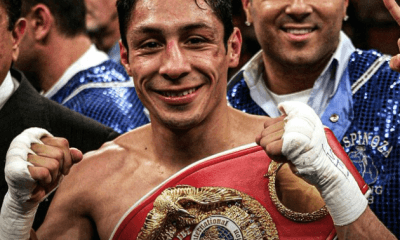
 Featured Articles4 weeks ago
Featured Articles4 weeks agoR.I.P Israel Vazquez who has Passed Away at age 46
-
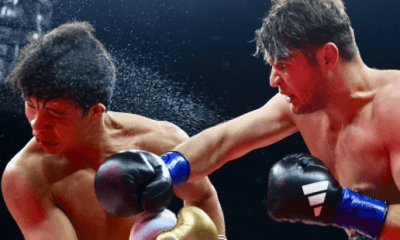
 Featured Articles3 weeks ago
Featured Articles3 weeks agoA Shocker in Tijuana: Bruno Surace KOs Jaime Munguia !!
-
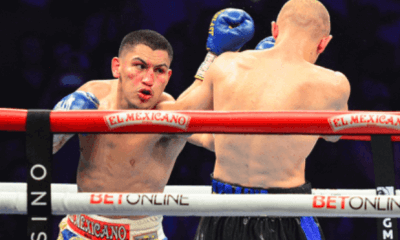
 Featured Articles1 week ago
Featured Articles1 week agoThe Ortiz-Bohachuk Thriller has been named the TSS 2024 Fight of The Year
-
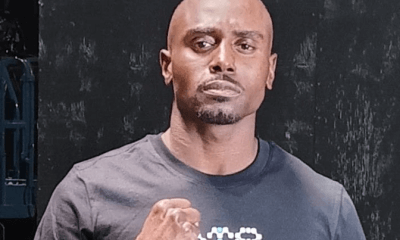
 Featured Articles3 weeks ago
Featured Articles3 weeks agoIntroducing Jaylan Phillips, Boxing’s Palindrome Man
-

 Featured Articles4 days ago
Featured Articles4 days agoFor Whom the Bell Tolled: 2024 Boxing Obituaries PART ONE (Jan.-June)
-
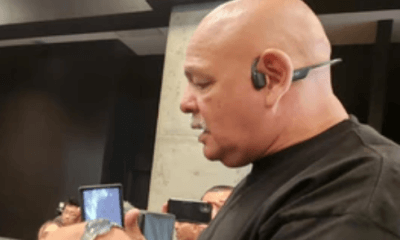
 Featured Articles2 weeks ago
Featured Articles2 weeks agoL.A.’s Rudy Hernandez is the 2024 TSS Trainer of the Year
-
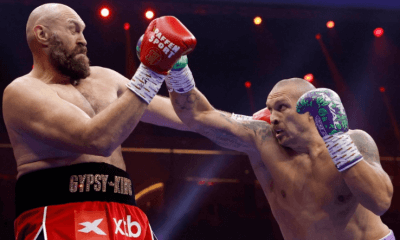
 Featured Articles2 weeks ago
Featured Articles2 weeks agoUsyk Outpoints Fury and Itauma has the “Wow Factor” in Riyadh
-
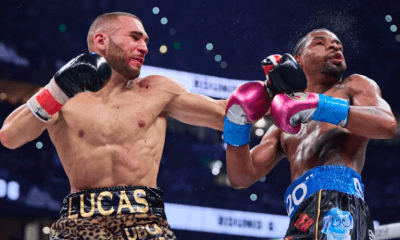
 Featured Articles1 week ago
Featured Articles1 week agoLucas Bahdi Forged the TSS 2024 Knockout of the Year

